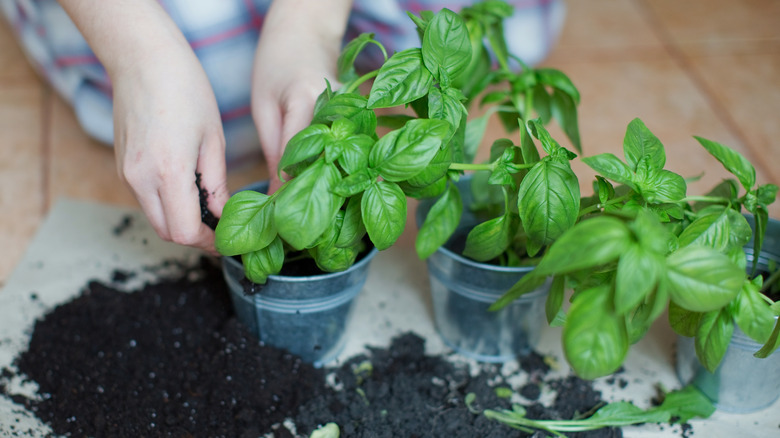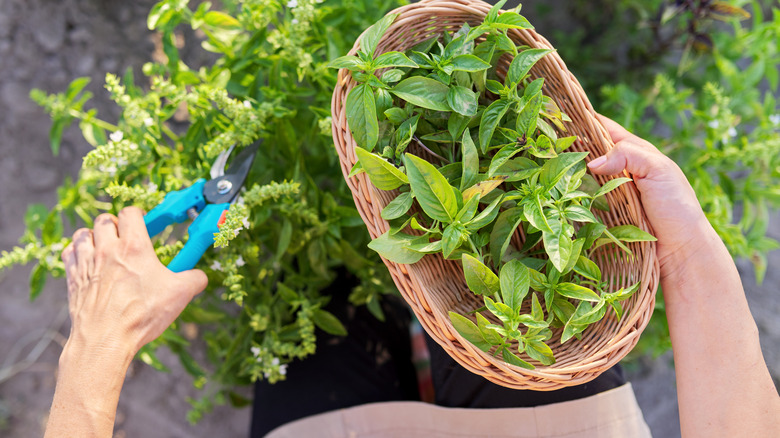What Are Those Black Spots On My Basil Plant's Leaves?
When mysterious black spots start to mar the vibrant green leaves of your basil plant, it's natural to feel a wave of concern wash over you. A host of culprits could be behind these unwelcome blotches, including fungal diseases, pesky insect infestations, nutrient deficiencies, or simply environmental stressors. Even though these spots might worry you, it's important to keep in mind that issues like this are pretty common with plants. Most of the time, you can solve these problems successfully with the right information.
The primary step to combating this issue lies in determining what's causing the black spots on your basil plant. A one-size-fits-all solution doesn't exist for plant problems, so it's crucial to accurately diagnose the underlying cause first. This involves closely examining the spots and overall plant condition and sometimes even seeking expert advice.
Once you've identified the likely cause, you can tailor a treatment plan for your basil plant accordingly. This might involve improving air circulation for fungal diseases, introducing a natural insecticide for pest issues, or adjusting your watering schedule and the plant's location to better suit its needs for environmental stress. By accurately diagnosing the issue and responding appropriately, you can restore your basil plant to its former health and prevent similar problems.
Identifying the problem
Diagnosing the cause of the black spots on your basil plant requires a bit of detective work and close observation. If you notice dark spots, sometimes bordering on black, encircled by a brown halo, the fungus Cercospora leaf spot may be to blame. This fungus thrives in damp environments, so habits like overwatering or situating your basil in high-humidity conditions might make your plant more prone to this disease. An accompanying yellow halo could signal a bacterial disease known as Pseudomonas cichorii. The marks from these diseases manifest on both leaves and stem and expand as the disease advances.
In contrast, if you spot tiny black dots randomly scattered across the leaf surface, you may be dealing with an insect infestation. Insects such as aphids or thrips can be the culprits behind these black spots. These bugs eat the sap from the plant, which causes small, dark spots on the leaves. Also, these insects leave behind a sticky substance called honeydew. This can bring more bugs and even cause a type of mold called sooty mold to grow. Lastly, nutrient deficiencies can often be culprits behind the discoloration and deformation of basil leaves. Insufficient amounts of key nutrients can cause leaves to yellow, curl, or develop spots. This is typically a less likely cause of black spots but is still worth considering once you've excluded other potential causes.
Eliminating the black spots
Now that you know what's likely causing the black spots, you're ready to handle the problem. If it's a fungus or bacteria causing the issue, it's important to move fast. Start by picking off and throwing away infected leaves to prevent the disease from spreading. Remove and dispose of infected leaves to prevent the disease from spreading.
Overwatering is a no-no, as damp leaves create an ideal breeding ground for fungi. Another beneficial move is to enhance air circulation around your plants, reducing humidity levels and further deterring fungal growth. In extreme instances, you might need to use a fungicide suitable for edible plants.
If you're dealing with insect pests, a strong stream of water can dislodge many of them. Aim to do this early in the day, giving your plant ample time to dry and thereby avoiding the creation of a damp environment that fungi find inviting. In severe infestations, consider employing an insecticidal soap or a neem oil spray. Don't forget to always read and follow the product instructions for safe and effective use.
If your basil plant shows signs of lacking nutrients, using the right fertilizer and testing the soil can help fix the problem. Supplying your plant with the nutrients it lacks can rejuvenate its health, restoring its lush green appearance and vigor. Finally, don't forget that preventing problems is always better than fixing them later. So, try to regularly check your plants for early signs of disease or bugs.


